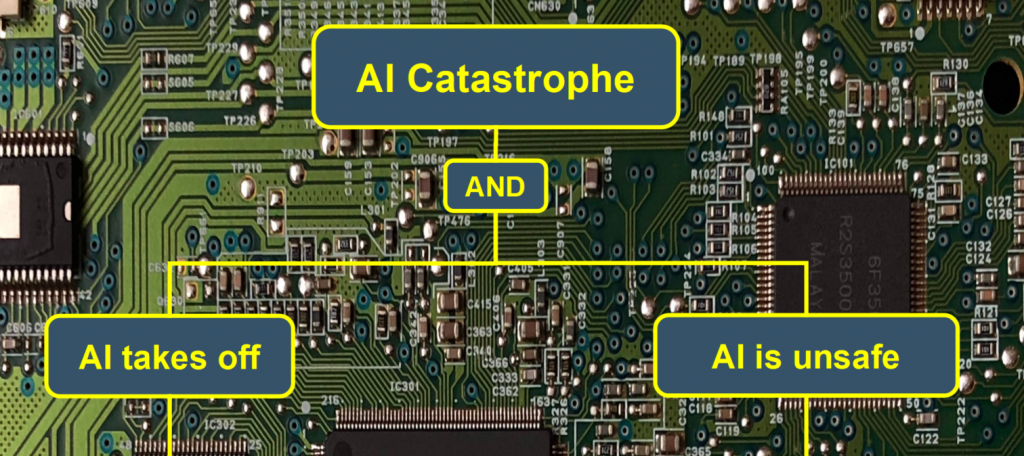
This paper analyzes the risk of a catastrophe scenario involving self-improving artificial intelligence. An self-improving AI is one that makes itself smarter and more capable. In this scenario, the self-improvement is recursive, meaning that the improved AI makes an even more improved AI, and so on. This causes a takeoff of successively more intelligent AIs. The result is an artificial superintelligence (ASI), which is an AI that is significantly more intelligent and more capable than humans. In this scenario, the ASI gains control over the world and causes a major global catastrophe, potentially even killing everyone.
ASI-PATH: the ASI Pathways model. This paper introduces ASI-PATH, a model for analyzing the risk of global catastrophe from self-improving ASI. ASI-PATH is a fault tree model, which is a standard type of model in risk analysis. The model shows different pathways to ASI catastrophe. For example, the ASI could come from a specially designed AI or from an
The main model sections. The model has two main sections, depicted in the image above. One section models how the AI gains control of the world. It has three parts: (1) the physical possibility of takeoff resulting in ASI, (2) the creation of a seed AI capable of recursive self-improvement, and (3) the failure of efforts to contain the AI so that it would not gain control of the world. The other section models how the AI uses its control to cause a catastrophe. It also has three parts: (1) the failure of human efforts to make the AI safe, (2) the AI does not make itself safe, and (3) the AI is not deterred from causing catastrophe. The two main model sections are shown in the first figure below.
Risk reduction interventions. ASI-PATH models five interventions that could reduce the risk of ASI catastrophe: (1) Review boards to evaluate the riskiness of specific ASI projects and steer them in safer directions; (2) Encourage research into how to make ASI safer, such as by making funding available or creating a culture of safety among AI researchers; (3) Enhance human capabilities so that an AI would not gain control of the world; (4) Confine the AI so that it does not gain control of the world; and (5) Enable some AIs to prevent other AIs from gaining control of the world. Each intervention affects one or more parts of the model. If future research gets probabilities for the model parts, then the effectiveness of each intervention can be estimated.
Academic citation:
Barrett, Anthony M. and Seth D. Baum, 2017. A model of pathways to artificial superintelligence catastrophe for risk and decision analysis. Journal of Experimental & Theoretical Artificial Intelligence, vol. 29, no. 2, pages 397-414, DOI 10.1080/0952813X.2016.1186228.
Image credit: Aler Kiv
This blog post was published on 28 July 2020 as part of a website overhaul and backdated to reflect the time of the publication of the work referenced here.







